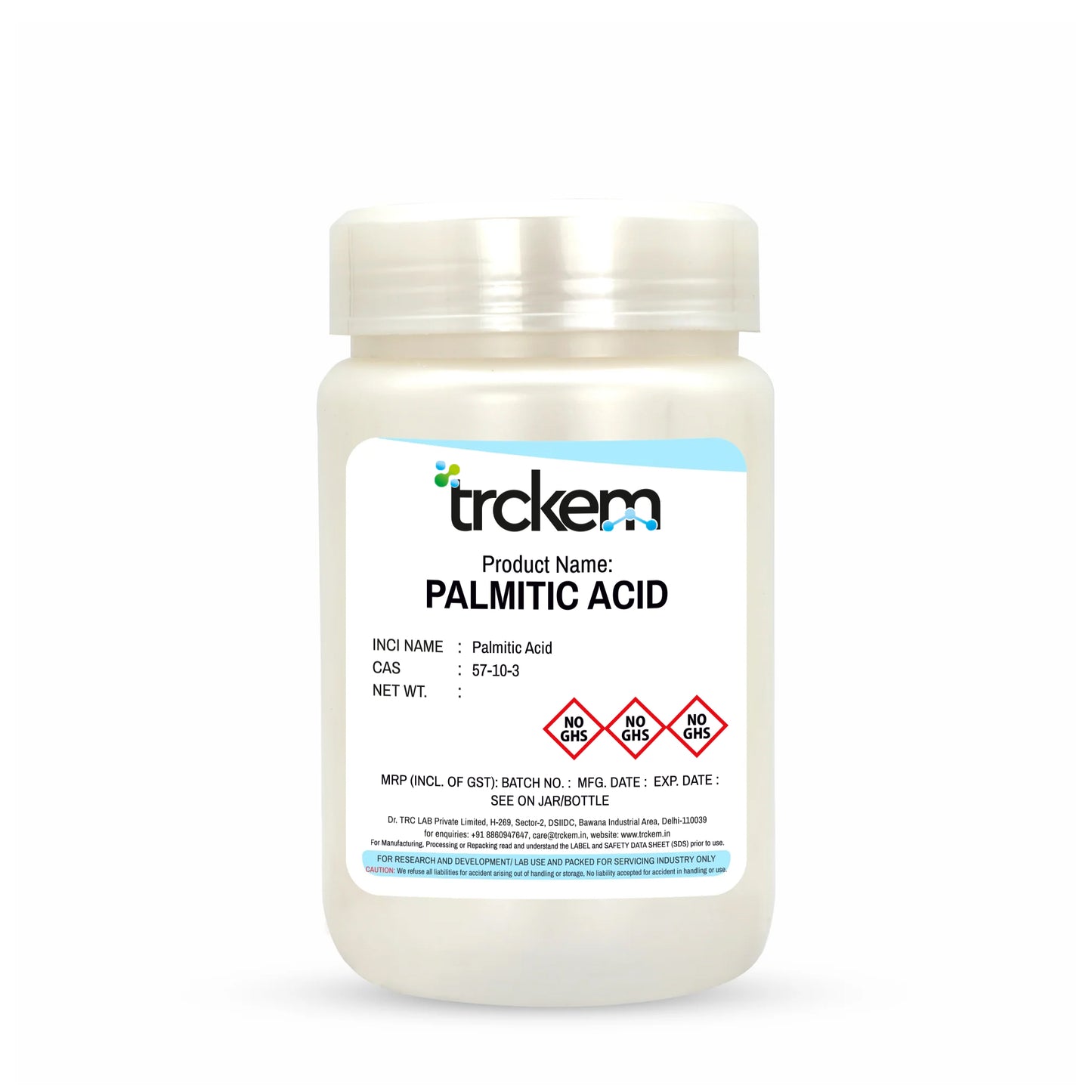

FAQ(Frequently Asked Questions)
1. What is Palmitic Acid?
Palmitic Acid is a naturally occurring saturated fatty acid commonly used in personal care and cosmetic products. It functions as an emollient, surfactant, and thickening agent, providing a smooth and creamy texture to skincare formulations. It is derived from palm oil, animal fats, and some plant-based oils.
2. What is the CAS Number and INCI Name of Palmitic Acid?
CAS Number: 57-10-3
INCI Name: Palmitic Acid
3. What are the benefits of Palmitic Acid in personal care products?
Palmitic Acid offers several advantages, including:
Moisturizing Effect: Acts as an emollient, locking in moisture for softer skin.
Texture Enhancer: Improves the consistency and spreadability of creams and lotions.
Surfactant Properties: Helps cleanse the skin by breaking down oils and dirt.
Foaming Agent: Contributes to foam stability in soaps and cleansers.
Conditioning Agent: Enhances the smoothness of hair and skin.
4. In which personal care products is Palmitic Acid commonly used?
Palmitic Acid is widely used in:
Moisturizers and lotions (for hydration and smooth texture)
Cleansers and face washes (as a surfactant)
Shampoos and conditioners (for hair conditioning)
Bar soaps and body washes (to create a rich lather)
Lipsticks and balms (for a smooth application and stability)
5. Is Palmitic Acid safe for skin?
Yes, Palmitic Acid is generally safe and well-tolerated by most skin types when used in cosmetic formulations. However, those with acne-prone skin should use it in moderation, as it may contribute to clogged pores in some cases.
6. Can Palmitic Acid be used in natural or organic formulations?
Yes, Palmitic Acid can be derived from natural sources like palm oil and coconut oil, making it suitable for natural and organic formulations. However, some formulations use synthetic versions.
7. Does Palmitic Acid cause acne or clog pores?
While Palmitic Acid is non-toxic and safe for most skin types, individuals with oily or acne-prone skin should be cautious, as it is considered mildly comedogenic and may contribute to clogged pores.
8. How does Palmitic Acid enhance the texture of skincare products?
Palmitic Acid acts as a thickening agent, giving creams and lotions a richer, creamier texture for easier application and absorption.
9. Is Palmitic Acid vegan-friendly?
Palmitic Acid can be sourced from both animal and plant-based ingredients. To ensure a vegan formulation, it must be derived from plant sources like palm or coconut oil.
10. How should Palmitic Acid be stored?
Palmitic Acid should be stored in a cool, dry place, away from direct sunlight and heat, to maintain its stability and effectiveness.



